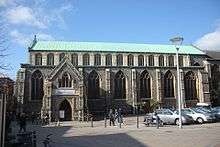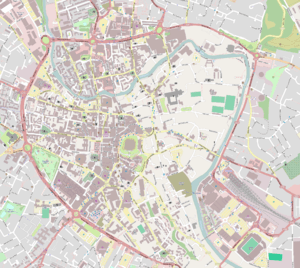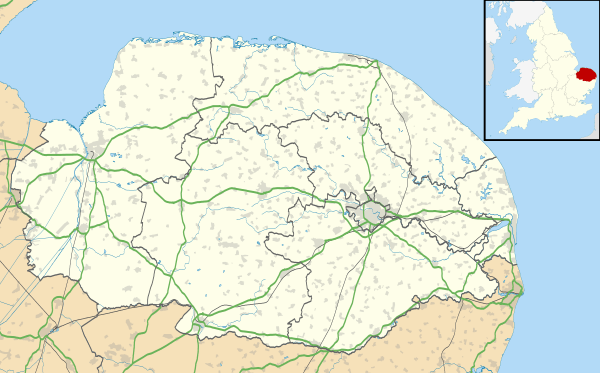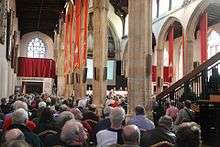St. Andrew's and Blackfriars' Hall, Norwich
St. Andrew's Hall and Blackfriars' Hall are a Grade I listed set of friary church and convent buildings in the English city of Norwich, Norfolk, dating back to the 14th century. They make up the most complete friary complex surviving in England.[1] The complex is made up of several flint buildings. The centrepiece is St Andrew's Hall. The halls are now used for conferences, weddings, concerts, beer festivals and meetings. The maximum capacity is 1200 people.[2] It is one of the Norwich 12 heritage sites.
| St. Andrew's Hall and Blackfriars' Hall | |
|---|---|
 St. Andrew's Hall | |
| Type | friary church and convent buildings |
| Location | Norwich |
| Coordinates | 52.6311°N 1.2957°E |
| Built | 1307 onwards |
| Governing body | Norwich City Council |
Listed Building – Grade I | |
 Location of St. Andrew's Hall and Blackfriars' Hall in Norwich  St. Andrew's and Blackfriars' Hall, Norwich (Norfolk) | |
.jpg)
History
In the mid 13th century a religious order called the Friars of the Sack settled in Norwich, in the parishes of St. Andrew and Peter Hungate. By the early 14th century, the group was in decline. In 1307 the Dominican Order, also called the Black Friars because of the colour of their habit, took over the site by royal licence under the condition they cared for the last remaining friar.[3]

The first church and buildings were destroyed in 1413 in a serious fire which destroyed a large part of the city.[4] The second church building which survives today was completed in 1470, with St Andrew's Hall forming the nave of the new church. There is also a Blackfriars' Hall as well as a crypt, chapel and cloisters.
During the Reformation, the site was saved by the City Corporation, which bought it from the king for use as a 'common hall.' Since then the complex has been used for worship, as a mint and as a workhouse.[5][6] It has been used regularly for civic occasions since 1544, when the first Mayor's feast was held for the inauguration of Henry Fuller. The Norwich Triennial Festival, the third oldest in the country, began here in 1824.
See also
References
- Sutermeister, Helen (1977). The Norwich Blackfriars. Norwich: City of Norwich in conjunction with the Norwich Survey. p. 1.
- St. Andrew's Hall website
- Sutermeister (1977), p. 2
- The Norwich Blackfriars Online. "The Fire of 1413". Retrieved 7 January 2016.
- Norwich 12 Leaflet, Norwich HEART, 2010
- Norwich 12 Guidebook, Norwich HEART, 2008. ISBN 978-0-9560385-0-0
External links
| Wikimedia Commons has media related to St. Andrew's Hall, Norwich. |